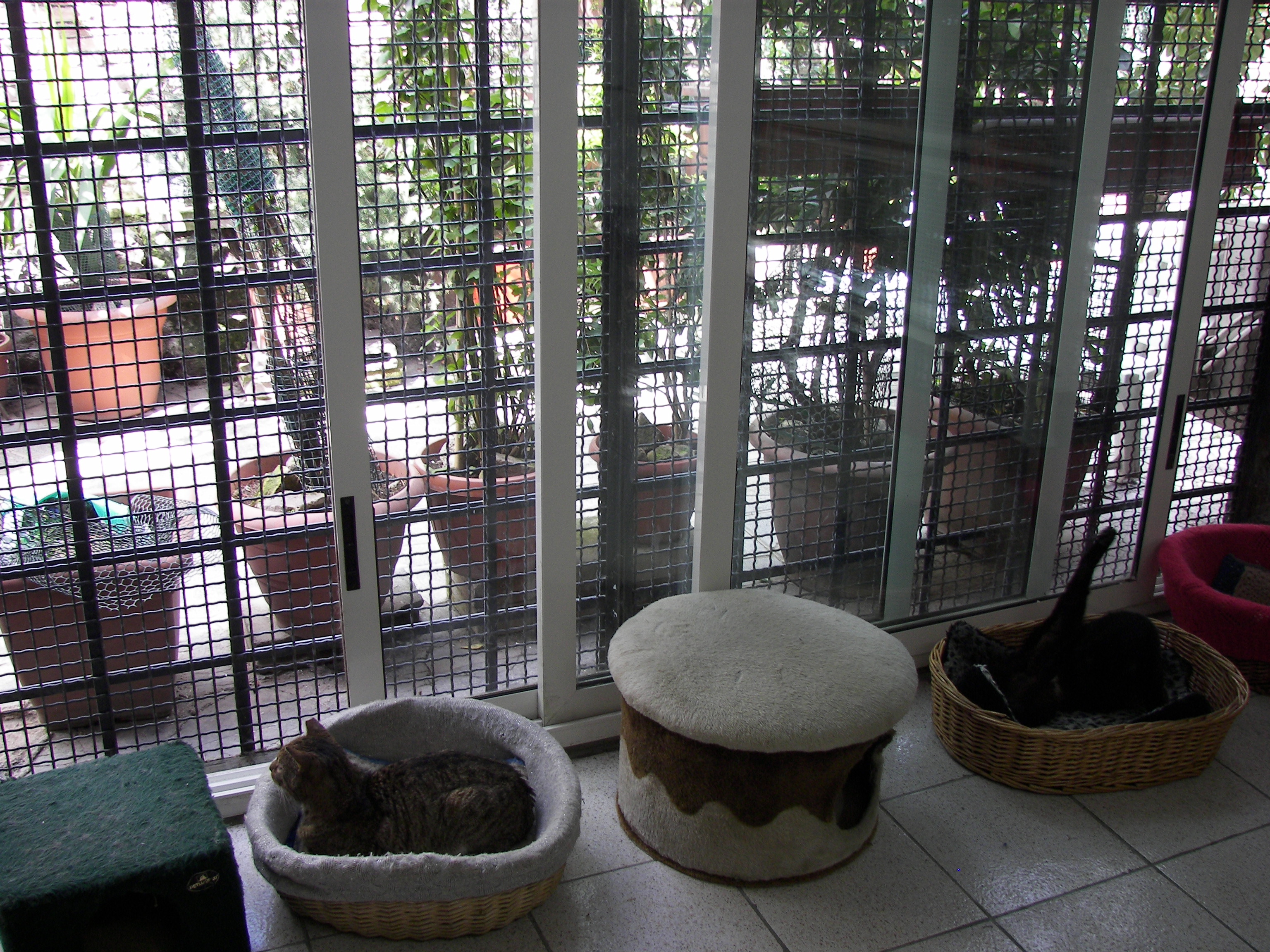 Where the cats roam free, including a not-to-miss photo stream that would have to be my 2013 number one winner as an Apartment Therapy tour (even if the pictures are from the New York Times). Just that that design spirit is so wonderfully captured-- nay, taken to new heights-- and so charmed the hearts of Times readers that article and stream hit the top of the charts for most emailed on that day.
Where the cats roam free, including a not-to-miss photo stream that would have to be my 2013 number one winner as an Apartment Therapy tour (even if the pictures are from the New York Times). Just that that design spirit is so wonderfully captured-- nay, taken to new heights-- and so charmed the hearts of Times readers that article and stream hit the top of the charts for most emailed on that day."Shakespeare stings thee."
Home of ceramic artist Siglinda Scarpa, it is known as the Goathouse Refuge in Pittsboro, N.C. Meet this loving person here on youtube where she reportedly raises 13,000 dollars per month to care for the cats from donations and the sale of her artwork. The New York Times reports that the Gregg Museum at North Carolina State University will exhibit her ceramic work next fall. Curator Roger Manley calls Ms. Scarpa “the Mother Teresa of animals,” also comparing her to Albert Schweitzer, “taking care of everybody, out in the woods." He describes her home - “so calm and serene — like a spa for cats.”
 Ms. Scarpa is originally from Italy, a land where cats are beloved and many; for example, Henry Chu at the Los Angeles Times reports cats also roaming freely at the Largo di Torre Argentina Square in Rome; another 200 felines, well fed and groomed for 19 years by dedicated volunteers assiduously tending their needs at the site of Julius Caesar's notorious Ides of March stabbing. Healthy rescued kitties come and go freely among the ruins from a site now threatened by *those authorities* because the organization (funded by private donors) sought to be connected to Rome's sewage system. Giving someone somewhere else an axe to grind-- and though the sanctuary has spayed and neutered over 27,000 cats and vaccinates many others-- helping rather than hindering Rome with its kitty issues. Another article here from The New York Times.
Ms. Scarpa is originally from Italy, a land where cats are beloved and many; for example, Henry Chu at the Los Angeles Times reports cats also roaming freely at the Largo di Torre Argentina Square in Rome; another 200 felines, well fed and groomed for 19 years by dedicated volunteers assiduously tending their needs at the site of Julius Caesar's notorious Ides of March stabbing. Healthy rescued kitties come and go freely among the ruins from a site now threatened by *those authorities* because the organization (funded by private donors) sought to be connected to Rome's sewage system. Giving someone somewhere else an axe to grind-- and though the sanctuary has spayed and neutered over 27,000 cats and vaccinates many others-- helping rather than hindering Rome with its kitty issues. Another article here from The New York Times.Photos from wikimedia (credits below):


On the bright side, the shelter's fight is supported by Mayor Gianni Alemanno and his noble cat Certosino while led by a determined and outspoken heroine, the opera singer Silvia Viviani. Plus, NPR reports the Roman cats so popular that the city council recognized cats as part of the city's "biocultural heritage." The city's superintendent for culture, Umberto Broccoli, says that decree ensures the felines cannot be evicted, adding, "As an institution, the cats of Rome are older than the marble columns and pediments. Therefore, the feline colony will not be moved."
 Meanwhile, Ernest Hemingway's home in Key West, Florida is having similar legal issues; it is sanctuary to 45 celebrated polydactyl (or 6 toed) descendants of Snowball, a cat passed on to Hemingway by a sea captain. Per the writer's habit, Snowball's progeny are named after famous people, with some now resting in a charming cat cemetery whereby tour guests can find the likes of Frank Sinatra beside Zsa Zsa Gabor, Marilyn Monroe, or a Mr. Bette Davis. The living wander freely about the property, though someone wandered a bit far afield one day, encountering someone somewhere else who didn't like him.
Meanwhile, Ernest Hemingway's home in Key West, Florida is having similar legal issues; it is sanctuary to 45 celebrated polydactyl (or 6 toed) descendants of Snowball, a cat passed on to Hemingway by a sea captain. Per the writer's habit, Snowball's progeny are named after famous people, with some now resting in a charming cat cemetery whereby tour guests can find the likes of Frank Sinatra beside Zsa Zsa Gabor, Marilyn Monroe, or a Mr. Bette Davis. The living wander freely about the property, though someone wandered a bit far afield one day, encountering someone somewhere else who didn't like him.Now it may wind up in the hands of the Supreme Court.
Like the Roman ruins, tourists at the Hemingway site are often drawn to the location by the cats more than the site's history or former human inhabitants; and at the writer's historic abode, humans may not lounge, say, on the beautifully preserved furniture, but the beautifully cared for felines (as Ernest would surely want) are welcome to flounce themselves down and about. Photostream here.
Cats, it seems, well cared for by humans, leave little or no footprint; while stopping humans from caring for them (unsurprisingly) accomplishes the opposite. Besides, cats seem to bring a place to life - imbibe it with an even greater meaning for the people who visit and then wish to return.
Back in Rome, Lia Dequel, who cofounded the shelter with Ms.Vivianni, says, "People are interested more in cats than in monuments." And-- "The two together are fantastic ... because monuments come alive if you see a cat lying on it, or jumping from one pillar to another."
The same seems to be the case for Mr. Hemingway.
*Photo credits, top to bottom/Wikipedia, photographer: Tinaface86, The Goathouse Refuge, artist Siglinda Scarpa's home, studio, and cat sanctuary /Visiting The Ancients, photographer: Shelly Martin, "One of the residents at the Torre Argentina cat sanctuary"/Wikimedia, photographer: Wknight94, Cat shelter in Largo di Torre Argentina in Rome /Wikimedia, photographer: Wknight94, Cat shelter in Largo di Torre Argentina in Rome./NPR, photographer: Rob O'Neal, '"Hairy Truman," one of the six-toed cats at the Ernest Hemingway Home and Museum in Key West, Fla.'
No comments:
Post a Comment